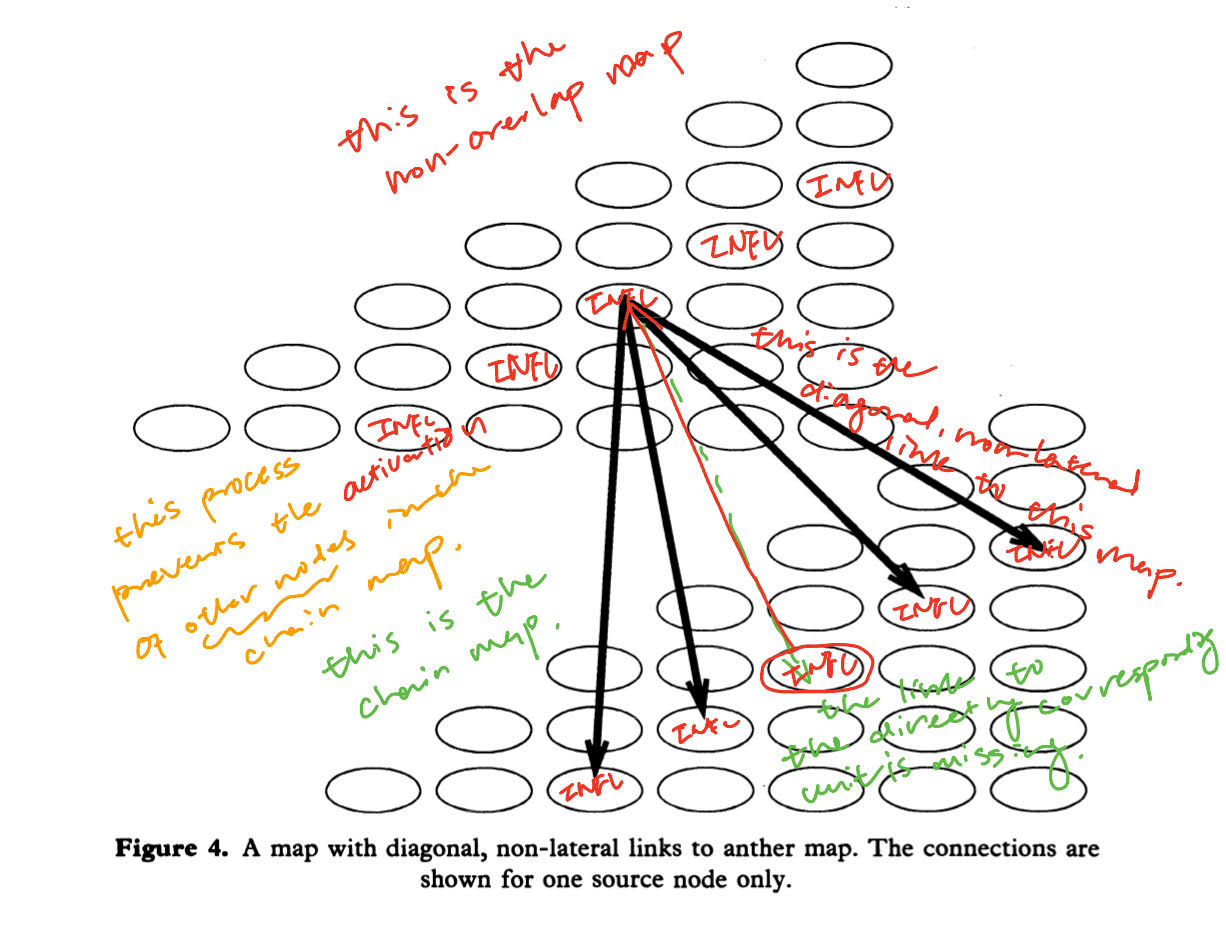Dealing with Compositionality
This blog will introduce the research done in syntax that addressed compositionality. In one of the connectionist natural language processing papers I have read about, it touches on government binding theory proposed by Chomsky, and the paper tried to model the motion from d-structure to s-structure in GB theory through the non-overlap constraint and chain map combined with NNs.
And the demonstration of the non-overlap map is below

Non-Overlap Constraint Explained
The non-overlap constraint is a rule in cognitive models or neural networks that prevents overlapping activations of units in a chain map. This ensures that no two units representing the same syntactic marker can be active simultaneously, which helps maintain clear and distinct representations.
Diagram Breakdown
Components:
Chain Map (Green Text):
- Represents the initial activation of units.
- Units in this map correspond to elements or tokens that can be active.
Non-Overlap Map (Red Text):
- Corresponds to the chain map and enforces non-overlapping activations.
- Units in this map prevent other units in the same diagonal from activating.
Diagonal, Non-Lateral Inhibitory Links (Black Bold Arrows):
- These links prevent other units in the corresponding diagonal of the chain map from activating, thereby enforcing the non-overlap constraint.
Activation of Corresponding Unit In The Non-Overlap Map (Red Arrow)
- The red arrow or the lateral link indicates an activation process from the chain map where there is a unit activated. Correspondingly, there is a unit in direct parallel in the non-overlap map being activated.
Process:
- When a unit in the chain map is activated, it activates its corresponding unit in the non-overlap map.
- The active unit in the non-overlap map then inhibits all other units in the same diagonal in the chain map.
- This ensures no two units in the chain map, which represent the same syntactic marker, can be active simultaneously.
Code Example with Explanation
Let’s look at a pseudo implementation that matches the diagram:
1 |
|
Summary
Chain Map Activation:
- Activating a unit in the chain map triggers the corresponding unit in the non-overlap map.
- Example: Activating
ChainMapA1will activateNonOverlapMapA1.
Non-Overlap Map Enforces Constraint:
- The activated unit in the non-overlap map inhibits other units in the same diagonal in the chain map.
- This ensures that other units in the corresponding diagonal of the chain map remain inactive, preserving the non-overlap constraint.
Conclusion
By combining the visual diagram with the detailed code example, we’ve illustrated how the non-overlap constraint is implemented and enforced in a cognitive or neural model. The non-overlap map plays a crucial role in ensuring that units representing the same syntactic marker do not overlap in their activation, maintaining a clear and distinct representation of information.